#beriah
Explore tagged Tumblr posts
Video
youtube
🔮 A Four Page Primer ✨
The significance of the Page is often overlooked in the tarot. As the youngest members of their courts the role the messenger plays is easily eclipsed by their elders, but as the Earthy quality of their suit their humble endeavor is the most important job in the castle. In this tidbit we explore the connection the Pages have to the divine and the message they provide from the heavens. Tarot featured Rider Tarot by Arthur Edward Waite & Pamela Colman Smith Music Provided by RingingPyramid Come join your friendly neighborhood Satanist for a tarot reading LIVE on Twitch evenings 7PM-11PM EST
#tarot#divination#fortune telling#court cards#pages#page of wands#page of cups#page of swords#page of pentacles#kabbalah#earth element#earth#atziluth#beriah#yetzirah#assiah#esoteric#occult#as above so below
3 notes
·
View notes
Text
Fuyuki is a professional Beriah hater smh
#my art#my ocs#original characters#artists on tumblr#art#silly#funny#Fuyuki Chikafuji#Beriah Falls#Allegra Crawgo
5 notes
·
View notes
Text

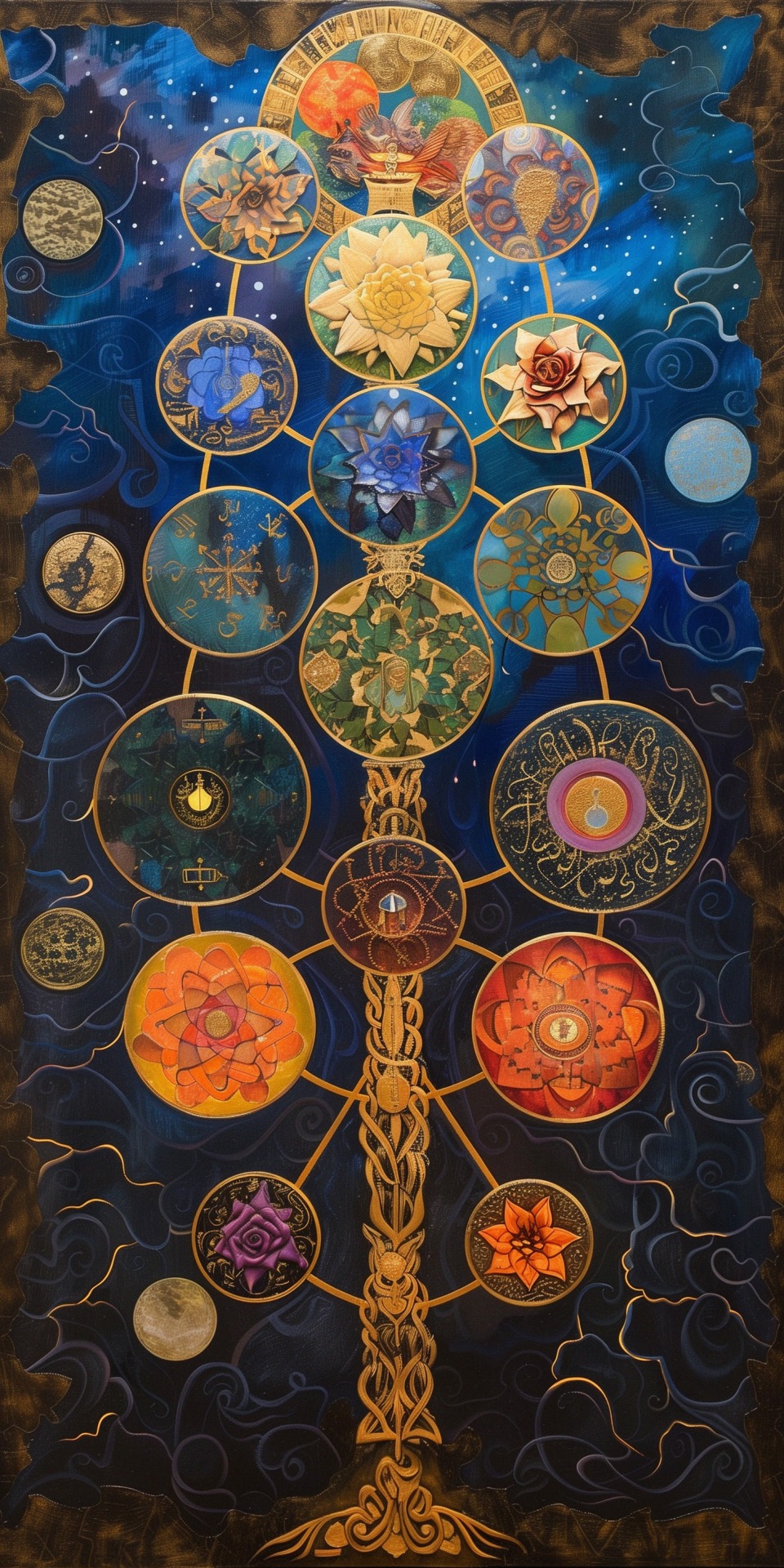
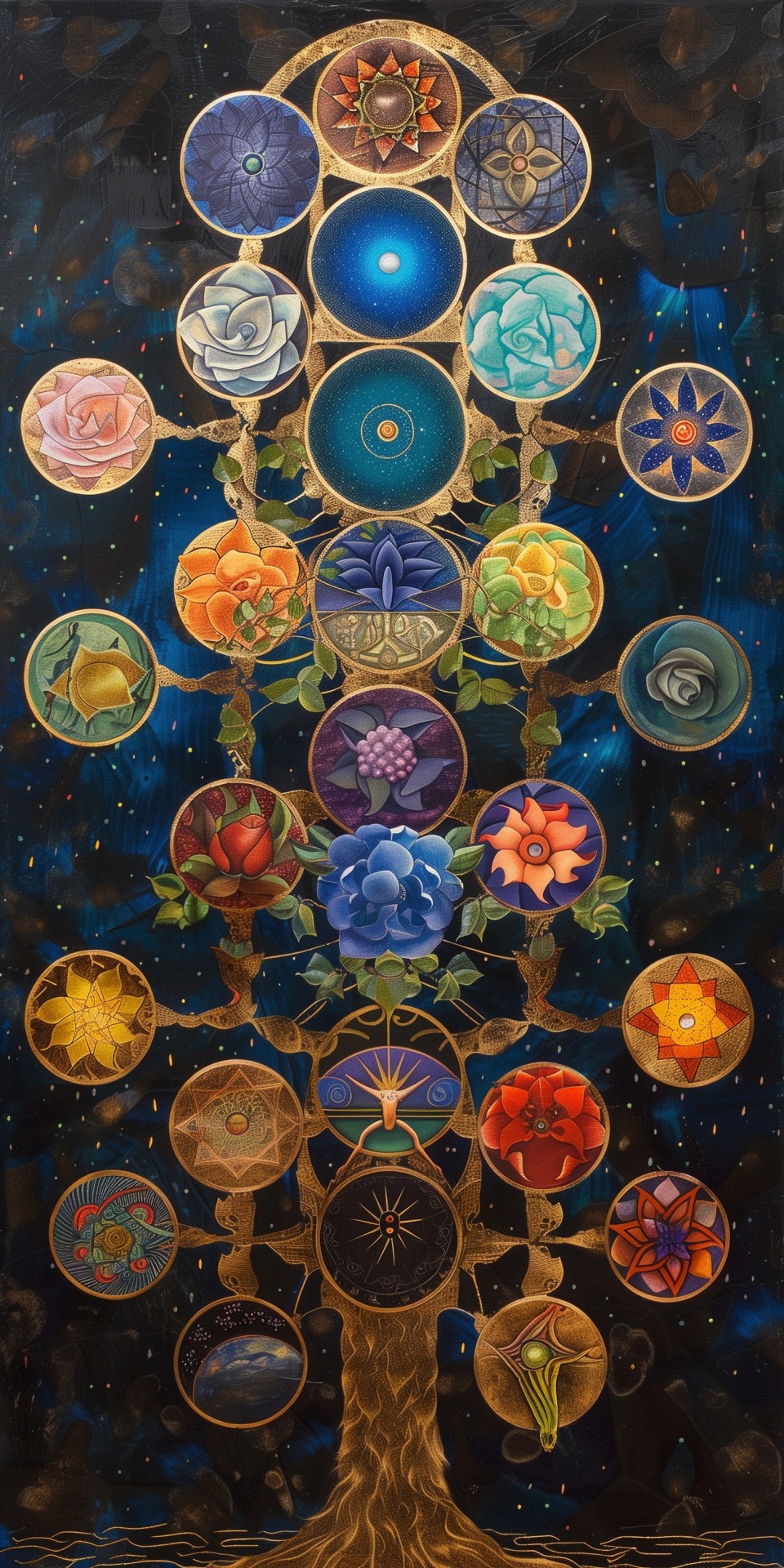
“All things ephemeral are seen as symbols; insufficiency becomes meaningful event; The indescribable is accomplished; The Eternal Feminine draws us upward.” - Goethe, Faust Jacob’s Ladder—Tree of Life Talon Abraxas
The Tree of Life (Kabbalah ) is derived from the Flower of Life. In Hebrew, it is a mystical symbol within the Kabbalah of esoteric Judaism used to describe the path to God. It is an arrangement of ten interconnected spheres (called sephiroth, meaning ‘spheres’), which represent the central organizational system of the Jewish Kabbalistic tradition or ‘cosmology’ of the Kabbalah.
The Tree of life is considered to be a map of the universe and the psyche, the order of the creation of the cosmos, and a path to spiritual illumination.
The ten spheres represent the ten archetypal numbers of the Pythagorian system. There are said to be 32 paths on the Tree of Life. The first 10 are the Sefiroth (not including Daat). The remaining 22 correspond to the lines or channels of energy that join the Sefiroth together. Each of these, in turn, corresponds to one of the 22 letters of the Hebrew alphabet.
The Crown (‘Kether’ in Hebrew): the Creator Himself.
Wisdom (‘Chokhmah’): Divine reality/revelation; the power of Wisdom.
Understanding (‘Binah’): repentance/reason; the power of Love.
Mercy (‘Chesed’): grace/intention to emulate God; the power of vision.
Strength (‘Gevurah’): judgment/determination; the power of Intention.
Beauty (‘Tiferet’): symmetry/compassion; the power of Creativity.
Victory (‘Netzach’): contemplation/initiative/persistence; the power of the Eternal Now.
Splendour (‘Hod’): surrender/sincerity/steadfastness; the power of Observation.
Yesod (‘Foundation’): remembering/knowing; the power of Manifesting.
Kingdom (‘Malkuth’): physical presence/vision and illusion; the power of Healing.
Kabbalistic tree of life
The Kabbalistic tree of life has evolved over time. Its basic design is based on descriptions given in the Sefer Yetsirah, or Book of Creation, and expanded upon in the enourmous Kabbalistic text Zohar, the book of Splendour. The ten sephira, similar to the Norse tree of life, are divided into four realms:
Atziluth: the realm of the supernal, beyond which is the ain, or no-thing.
Beriah: the creative world, of archetypes and ideals.
Yetsirah: the world of formation.
Assiah: manifest creation, the material world.
Tree of Life does not only speak of the origins of the physical universe out of the unimaginable, but also of man’s place in the universe. Since man is invested with Mind, consciousness in the Kabbalah is thought of as the fruit of the physical world, through whom the original infinite energy can experience and express itself as a finite entity. After the energy of creation has condensed into matter it is thought to reverse its course back up the Tree until it is once again united with its true nature.
Thus the Kabbalist seeks to know himself and the universe as an expression of God, and to make the journey of Return by stages charted by the Sephiroth, until he has come to the realization he sought.
61 notes
·
View notes
Text

Jacob’s Journey to Egypt
So Israel set out with all that he had, and when he came to Beersheba, he offered sacrifices to the God of his father Isaac. And that night God spoke to Israel in a vision: “Jacob, Jacob!” He said.
“Here I am,” replied Jacob.
“I am God,” He said, “the God of your father. Do not be afraid to go down to Egypt, for I will make you into a great nation there. I will go down with you to Egypt, and I will surely bring you back. And Joseph’s own hands will close your eyes.”
Then Jacob departed from Beersheba, and the sons of Israel took their father Jacob in the wagons Pharaoh had sent to carry him, along with their children and wives. They also took the livestock and possessions they had acquired in the land of Canaan, and Jacob and all his offspring went to Egypt.
Jacob took with him to Egypt his sons and grandsons, and his daughters and granddaughters—all his offspring.
Now these are the names of the sons of Israel (Jacob and his descendants) who went to Egypt: Reuben, Jacob’s firstborn.
The sons of Reuben: Hanoch, Pallu, Hezron, and Carmi.
The sons of Simeon: Jemuel, Jamin, Ohad, Jachin, Zohar, and Shaul the son of a Canaanite woman.
The sons of Levi: Gershon, Kohath, and Merari.
The sons of Judah: Er, Onan, Shelah, Perez, and Zerah; but Er and Onan died in the land of Canaan.
The sons of Perez: Hezron and Hamul.
The sons of Issachar: Tola, Puvah, Job, and Shimron.
The sons of Zebulun: Sered, Elon, and Jahleel.
These are the sons of Leah born to Jacob in Paddan-aram, in addition to his daughter Dinah. The total number of sons and daughters was thirty-three.
The sons of Gad: Ziphion, Haggi, Shuni, Ezbon, Eri, Arodi, and Areli.
The children of Asher: Imnah, Ishvah, Ishvi, Beriah, and their sister Serah.
The sons of Beriah: Heber and Malchiel.
These are the sons of Jacob born to Zilpah—whom Laban gave to his daughter Leah—sixteen in all.
The sons of Jacob’s wife Rachel: Joseph and Benjamin.
Manasseh and Ephraim were born to Joseph in the land of Egypt by Asenath daughter of Potiphera, priest of On.
The sons of Benjamin: Bela, Becher, Ashbel, Gera, Naaman, Ehi, Rosh, Muppim, Huppim, and Ard.
These are the sons of Rachel born to Jacob—fourteen in all.
The son of Dan: Hushim.
The sons of Naphtali: Jahzeel, Guni, Jezer, and Shillem.
These are the sons of Jacob born to Bilhah, whom Laban gave to his daughter Rachel—seven in all.
All those belonging to Jacob who came to Egypt—his direct descendants, besides the wives of Jacob’s sons—numbered sixty-six persons. And with the two sons who had been born to Joseph in Egypt, the members of Jacob’s family who went to Egypt were seventy in all.
Now Jacob had sent Judah ahead of him to Joseph to get directions to Goshen. When Jacob’s family arrived in the land of Goshen, Joseph prepared his chariot and went there to meet his father Israel. Joseph presented himself to him, embraced him, and wept profusely.
Then Israel said to Joseph, “Finally I can die, now that I have seen your face and know that you are still alive!”
Joseph said to his brothers and to his father’s household, “I will go up and inform Pharaoh: ‘My brothers and my father’s household from the land of Canaan have come to me. The men are shepherds; they raise livestock, and they have brought their flocks and herds and all that they own.’
When Pharaoh summons you and asks, ‘What is your occupation?’ you are to say, ‘Your servants have raised livestock ever since our youth—both we and our fathers.’ Then you will be allowed to settle in the land of Goshen, since all shepherds are detestable to the Egyptians.” — Genesis 46 | The Reader’s Bible (BRB) The Reader’s Bible © 2020 by Bible Hub and Berean Readers Bible. All rights Reserved. Cross References: Genesis 4:2; Genesis 12:2; Genesis 13:7-8; Genesis 15:1; Genesis 21:14; Genesis 25:20; Genesis 28:15; Genesis 29:29; Genesis 34:40; Genesis 35:23; Genesis 41:45; Genesis 43:30; Genesis 44:27; Genesis 45:10; Genesis 47:1; Genesis 47:2-3; Exodus 1:5; Exodus 6:14-15; Exodus 8:26; Numbers 1:38; Numbers 26:12; Numbers 26:15; Numbers 26:23; Numbers 26:26; Numbers 26:44; Numbers 26:48; Numbers 26:57; Joshua 24:4; 2 Samuel 20:1; Matthew 1:3; Luke 15:20; Acts 7:14-15
Genesis 46 Chapter Summary - Jacob's Journey to Egypt
#Joseph#Pharaoh#Goshen#settle#Jacob#Egypt#reunion#Genesis 46#Book of Genesis#Old Testament#BRB#The Reader's Bible#Bible Hub#Berean Reader's Bible
10 notes
·
View notes
Text
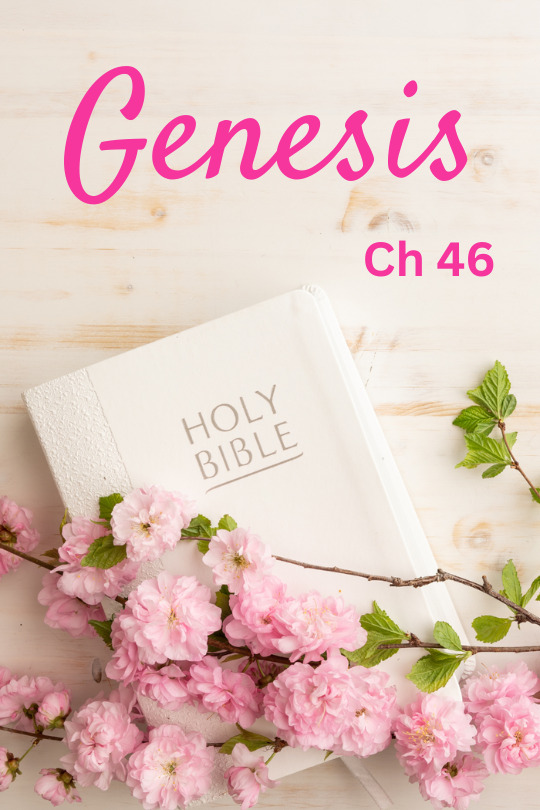
46 And Israel took his journey with all that he had, and came to Beersheba, and offered sacrifices unto the God of his father Isaac.
2 And God spake unto Israel in the visions of the night, and said, Jacob, Jacob. And he said, Here am I.
3 And he said, I am God, the God of thy father: fear not to go down into Egypt; for I will there make of thee a great nation:
4 I will go down with thee into Egypt; and I will also surely bring thee up again: and Joseph shall put his hand upon thine eyes.
5 And Jacob rose up from Beersheba: and the sons of Israel carried Jacob their father, and their little ones, and their wives, in the wagons which Pharaoh had sent to carry him.
6 And they took their cattle, and their goods, which they had gotten in the land of Canaan, and came into Egypt, Jacob, and all his seed with him:
7 His sons, and his sons' sons with him, his daughters, and his sons' daughters, and all his seed brought he with him into Egypt.
8 And these are the names of the children of Israel, which came into Egypt, Jacob and his sons: Reuben, Jacob's firstborn.
9 And the sons of Reuben; Hanoch, and Phallu, and Hezron, and Carmi.
10 And the sons of Simeon; Jemuel, and Jamin, and Ohad, and Jachin, and Zohar, and Shaul the son of a Canaanitish woman.
11 And the sons of Levi; Gershon, Kohath, and Merari.
12 And the sons of Judah; Er, and Onan, and Shelah, and Pharez, and Zarah: but Er and Onan died in the land of Canaan. And the sons of Pharez were Hezron and Hamul.
13 And the sons of Issachar; Tola, and Phuvah, and Job, and Shimron.
14 And the sons of Zebulun; Sered, and Elon, and Jahleel.
15 These be the sons of Leah, which she bare unto Jacob in Padanaram, with his daughter Dinah: all the souls of his sons and his daughters were thirty and three.
16 And the sons of Gad; Ziphion, and Haggi, Shuni, and Ezbon, Eri, and Arodi, and Areli.
17 And the sons of Asher; Jimnah, and Ishuah, and Isui, and Beriah, and Serah their sister: and the sons of Beriah; Heber, and Malchiel.
18 These are the sons of Zilpah, whom Laban gave to Leah his daughter, and these she bare unto Jacob, even sixteen souls.
19 The sons of Rachel Jacob's wife; Joseph, and Benjamin.
20 And unto Joseph in the land of Egypt were born Manasseh and Ephraim, which Asenath the daughter of Potipherah priest of On bare unto him.
21 And the sons of Benjamin were Belah, and Becher, and Ashbel, Gera, and Naaman, Ehi, and Rosh, Muppim, and Huppim, and Ard.
22 These are the sons of Rachel, which were born to Jacob: all the souls were fourteen.
23 And the sons of Dan; Hushim.
24 And the sons of Naphtali; Jahzeel, and Guni, and Jezer, and Shillem.
25 These are the sons of Bilhah, which Laban gave unto Rachel his daughter, and she bare these unto Jacob: all the souls were seven.
26 All the souls that came with Jacob into Egypt, which came out of his loins, besides Jacob's sons' wives, all the souls were threescore and six;
27 And the sons of Joseph, which were born him in Egypt, were two souls: all the souls of the house of Jacob, which came into Egypt, were threescore and ten.
28 And he sent Judah before him unto Joseph, to direct his face unto Goshen; and they came into the land of Goshen.
29 And Joseph made ready his chariot, and went up to meet Israel his father, to Goshen, and presented himself unto him; and he fell on his neck, and wept on his neck a good while.
30 And Israel said unto Joseph, Now let me die, since I have seen thy face, because thou art yet alive.
31 And Joseph said unto his brethren, and unto his father's house, I will go up, and shew Pharaoh, and say unto him, My brethren, and my father's house, which were in the land of Canaan, are come unto me;
32 And the men are shepherds, for their trade hath been to feed cattle; and they have brought their flocks, and their herds, and all that they have.
33 And it shall come to pass, when Pharaoh shall call you, and shall say, What is your occupation?
34 That ye shall say, Thy servants' trade hath been about cattle from our youth even until now, both we, and also our fathers: that ye may dwell in the land of Goshen; for every shepherd is an abomination unto the Egyptians.
#bible quote#bible verse#bible#bible scripture#bibletruth#christian bible#holy bible#bible reading#king james bible#bible study#god loves you#god loves us#jesus loves you#jesus loves us#christianity#faith in jesus#jesus saves#jesus is coming#holy spirit#daily bible verse#daily bible reading#daily bible study#bibleverse#gospel#faith
3 notes
·
View notes
Text
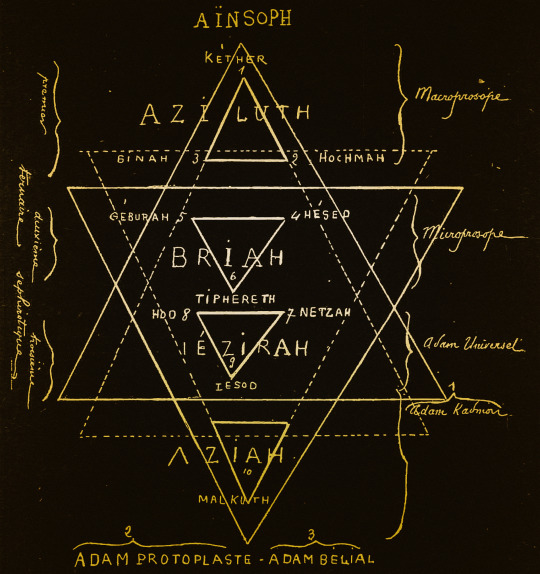
Four Worlds in Kabbalah
The Four Worlds are the comprehensive categories of Spiritual Realms in Kabbalah in the descending chain of Existence. The concept of “Worlds” denotes the emanation of creative Lifeforce from the Ein Sof Divine Infinite, through progressive, innumerable Tzimtzumim.
Atziluth (אֲצִילוּת), meaning World of Emanation. On this level the light of the Ein Sof (Infinite Divine “Without End”) radiates and is still united with its source. This supernal revelation therefore precludes the Souls and Divine Emanations in Atzilus from sensing their own existence. In Atzilus the 10 Sephiroth emerge in revelation, with Chochma (Wisdom) dominating, all is nullification of Essence to Divinity, not considered created and separate. The last Sephirah Malchut (Kingdom) is the “Divine Speech” of Genesis 1, through which lower Worlds are sustained.
Beri'ah (בְּרִיאָה), meaning World of Creation. On this level is the first concept of Creatio ex Nihilo, however without yet shape or form, as the creations of Beriah sense their own existence, though in nullification of being to Divinity. Beriah is the realm of the “Divine Throne”, denoting the Sephiroth configuration of Atzilus descending into Beriah like a King on a Throne. The Sephirah Binah (Understanding) predominates, Divine intellect. Also called the “Higher Garden of Eden”. The Highest Ranking Angels are in Beriah.
Yetzirah (יְצִירָה), meaning World of Formation. On this level the created being assumes shape and form. The emotional Sephiroth Chesed to Yesod predominate, the souls and angels of Yetzirah worship through Divine emotion and striving, as they sense their distance from the Understanding of Beriah. This ascent and descent channels the Divine vitality down through the Worlds, furthering the Divine purpose. Therefore, in Yetzirah are the main angels, such as Seraphim, denoting their burning consummation in Divine emotion. Also called the “Lower Garden of Eden”.
Assiah (עֲשִׂיָּה), meaning World of Action. On this level the creation is complete, differentiated and particular, due to the concealment and diminution of the Divine vitality. However, it is still on a spiritual level. The angels of Asiyah function on the active level, as the sephirah Malchut (fulfilment in Kingship) predominates. Below spiritual Asiyah is Asiyah Gashmi (“Physical Asiyah”), the final, lowest realm of Existence, our material Universe with all its creations. The last two Sephiroth of Asiyah channel the Lifeforce into Physical Asiyah. --Self Mastery
Top Image From Mysteria, 1913.
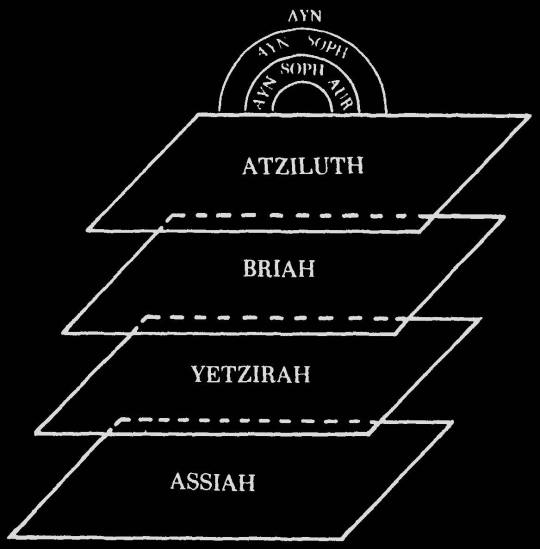
21 notes
·
View notes
Text
King of Cups. Pastoral Tarot

Element: Water
Sephirah: Hokhmah (Wisdom), sephirah two in Beriah (Creation) Golden Dawn Title: Knight of Cups, Lord of the Waves and the Waters, King of the Hosts of the Sea Elemental Combination: Fire of Water Astrological Sign: Pisces Rider Physical Quality: Older man with light brown hair and gray or blue eyes Rider Deck Theme: Channeled creativity Renaissance Character: Charlemagne If you set the Queen and King of Cups next to each other, in both the Marseille and Rider decks, you will notice that this married couple look away from each other (see page 415). They show two people who go their separate ways, who possibly have other lovers. The posture and glance of the Marseille King in particular strikes me as having a roving eye and seductive energy. Does this seem a trivial way to interpret the grand figures of the Tarot courts? If gossip was the only way we approached them, it would greatly limit us, but if we want to understand them as people, we should consider the human qualities they suggest to us. We can consider the Queen and King from an elemental viewpoint. Being water of water, the Queen becomes self-sufficient, not needing a partner. The King’s fire of water, on the other hand, pushes him to look for accomplishments beyond the Cups realm of the heart. As King, he must rule (or, in modern terms, seek success and establishment in the outer world), where society does not measure value in terms of love or relationship. The King of Cups sometimes strikes me as a very creative, sensitive person, a dreamer like the knight, who has channeled all that sensitivity into business or professional life—say, a poet who becomes a successful lawyer. In the Rider, his throne floats on the sea, yet the water never touches his feet. Compare this to the Queen, who sits on land and yet allows the water to flow into her dress. The King of Cups may indicate suppressed emotion, someone with deep levels of feeling who does not show this side to others lest it overwhelm him (or her). Charlemagne was a great warrior, but he also championed learning and the arts. Like King Arthur, he was expected to return in the future—in his case, to battle the Antichrist in Armageddon, a possible reference to his having beaten the Muslim invasion of Europe when it tried to cross from Spain into France. Readings—Fire of water suggests alchemical power to transform or channel emotional energy. The King suggests someone successful, maybe with deep emotions or creative impulses that he tends to hide. This may be a card of achievement in the arts. It may indicate someone with a drinking problem who usually covers it up. Sexual affairs are possible. Rachel Pollack
2 notes
·
View notes
Text
It's Theory O'Clock! Angels and Snakes.
Good afternoon everyone and happy Sunday!
It's theory time with Lili!
So...I have been looking up some of the literature and lore surrounding angel hierarchies. There are many differing opinions across multiple sources, especially when it comes to the beliefs of the Abrahamic religions.
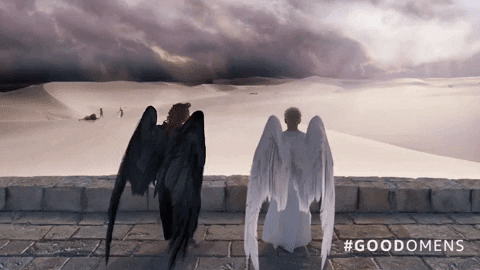
I have been using my own knowledge and mainly searching through Wikipedia. What I was particularly interested in is 'Seraphim'. Now sources differ as to what position they are in the Hierarchy but generally, they are relatively high ranking. Christian Ideology places them right at the top spot, whilst Judaism places them at number 5, and in Islam they are comparable with "Bearers of the Throne". In another branch of Jewish belief- Kabbalah, the Seraphim are the higher angels in the World of Beriah (Meaning Creation). Very complicated - start here.
In Hebrew, the word Seraph means "burning", however it is also used SEVEN times throughout the text of the Hebrew Bible to mean "Serpent". There are various opinions as to why this is; including "snake's fiery colours" and perhaps referring to the burning sensation left by a venomous bite. Regardless, I think you can see where I'm going with this.

It makes sense for Crowley to have been a high ranking angel before he started asking questions. He knows the passwords, can stop time, still has powers etc. In the first scene of Season 2, as I have pointed out it doesn't make sense that Crowley wouldn't know the universe will be shut down in 6000 years. Aziraphale does know.
Origen wrote in On First Principles that the Seraphim, in the Book of Isaiah, are the physical representation of the Christ and the Holy Spirit. His rationale comes from the idea that nothing "can wholly know the beginnings of all things and the ends of the universe" aside from G-d. Origen concludes this section in writing about the Seraphim as beings that have the knowledge of G-d revealed to them which elevates the role of the Seraphim to divine levels."
I do think Crowley had his memory wiped before the beginning. Also when we see Gabriel's trial, we see it doesn't take that much effort to wipe an angel's memory.
For all we know memory wiping could be done all the time. So not one single being has a full picture of the Divine Plan except for g-d.
Would explain why all these celestial beings seem so confused all the time!
#angel crowley#crowly x aziraphale#good omens#good omens spoliers#ineffable spouses#crowley#good ineffable omens#aziraphale#good omens analysis#good omens season 2#angel#fallen angel#demon#michael sheen#david tennant
9 notes
·
View notes
Text

oc art 5 pride month here is Eden and Beriah theyre both awful and also freaks
1 note
·
View note
Text
1 Chronicles 25: 7. "The Supervision of the King."

Asaph, Jeduthun and Heman were under the supervision of the king.
7 Along with their relatives—all of them trained and skilled in music for the Lord—they numbered 288. 8 Young and old alike, teacher as well as student, cast lots for their duties.
The King is Chabad, mastery of the faculties, which is derived from the combination of Chochmah, intuition, Binah, understanding, and Daas, application.
The three lines stand for the three intellectual faculties of the��Sefiros: the right line being Chochmah, the flash of an idea; the left line being Binah, understanding; and the centerline Daas, application of knowledge.
This thing, Chabad, is the most foundation of Kabbalah and cannot be dispensed with. It is also why only a Chasid, who mantains awareness of Chabad in this miserable lost world can appoint the King of Israel as only a Chasid will know if he possessed of Chochmah, Binah and Daas sufficient to conduct the Temple Musicians in the peformance of the script.
To cast lots for the duties to serve with the King of Israel and perform in his band, one must commit to the practice of Kabbalah and demonstrate mastery over the rest of what characteriszes the apprehensive world:
Finally, there is the dimension of the emotions, or middos. Here the shin’s right line represents Chessed, kindness; the left line represents Gevurah, severity or discipline; and the centerline represents Tiferes, mercy or compassion.
Furthermore, the three lines of the shin can signify the three pillars upon which the world stands:6 the study of Torah, prayer and good deeds.
The Gematria for 288 is related to the number of eons or "stars" that fall from the sky during imprisonment in Egypt. Under normal comnditions the four sets of 72 nexus to one another and produce an automatic magnitism between the self and the Holiest of Holies, the Self. In Egypt, where one wastes time, the stars, the sky and the creative surface do not meet and all the planes go dark. Mashiach has the power to instantly connect the Four Planes and restore nearness to God in the Quarternary Planes:
The level of the 288 sparks are explained in detail in Etz Chayim, Shaar 18. The rationale for the number 288 is explained in ch. 2: “The number of 288 sparks stems from the four dimensions of 72 that descended from the four forms of the name Havayah (i.e., Havayah [with a milui10of] 72, 63, 45, and 52). Together they are 288 sparks.” See also Pri Etz Chayim, Shaar HaKerias Shema, ch. 9, and Mishnas Chassidim, Maseches HaNitzutzin.
With regard to this concept, it is explained — see Torah Or (Parshas Vayeishev, the maamar entitled ViHinei Anachnu, sec. 2) — that the number 288 refers to the sparks as they existed in Atzilus. As they fell from Atzilus to the world of Beriah and fell from Beriah to Yetzirah and from Yetzirah to Asiyah, they became divided and separated into thousands and myriads.
Atzilus=
Atziluth or Atzilut (also Olam Atsiluth, עוֹלָם אֲצִילוּת, literally "the World of Emanation") is the highest of four worlds in which exists the KabbalisticTree of Life. It is also known as "near to God."[1]Beri'ah follows it. It is known as the World of Emanations, or the World of Causes.
Beriah=
Beri'ah (Hebrew: בְּרִיאָה), Briyah, or B'ri'ah (also known as Olam Beriah, עוֹלָם בְּרִיאָה in Hebrew, literally "the World of Creation"), is the second[1] of the four celestial worlds in the Tree of Life of the Kabbalah, intermediate between the World of Emanation (Atziluth) and the World of Formation (Yetzirah), the third world, that of the angels. It is known as the World of Creation, or Korsia (from Heb. כּוּרסָה - "seat, chair", the Throne).
Yetzirah=
he word Yetzirah is more literally translated as "Formation"; the word Briah is used for "Creation".
Asiyah=
According to the system of the later Land of Israel Kabbalah, 'Asiyah is the lowest of the spiritual worlds containing the Ten Heavens and the whole system of mundane Creation. The light of the Sefirot emanates from these Ten Heavens, which are called the "Ten Sefirot of 'Asiyah"; and through them spirituality and piety are imparted to the realm of matter—the seat of the dark and impure powers.
Representing purely material existence, it is known as the World of Action, the World of Effects or the World of Making. In western occultism it is associated with the Suit of Pentacles (or Coins or Disks, the terminology varies according to the deck) in the Tarot. The world of Yetzirah precedes it.
On this basis, we can understand why this exile has been prolonged for so long. For as is well known, the intent is to refine the 288 sparks and when their refinement is completed, Mashiach will come; may that be speedily in our days, Amen.
(The Hagahas Tzemach — to Mevo Shaarim, Shaar 2, Vol. III, ch. 9 — resolves this matter somewhat differently; see also Emek HaMelech, ch. 53.) Torah Or, Parshas Bo, the maamar entitled B’Etzem HaYom states: “288 sparks fell during the shattering of the vessels. From them, 202 were refined in the Egyptian exile.”
Chabad is the sign and also the means for the levels of refinement needed to leave Egypt and guarantee one never returns. So long as the Chasids, the Sheherds of Humanity ensure the King of Israel is loyal to its principals the world is safe from Egypt. While these are absent, there is great risk.
2 notes
·
View notes
Text
Fuyuki hating on pretty boy Beriah
1 note
·
View note
Text



Jacob’s Ladder—Tree of Life Talon Abraxas
The Tree of Life (Kabbalah ) is derived from the Flower of Life. In Hebrew, it is a mystical symbol within the Kabbalah of esoteric Judaism used to describe the path to God. It is an arrangement of ten interconnected spheres (called sephiroth, meaning ‘spheres’), which represent the central organizational system of the Jewish Kabbalistic tradition or ‘cosmology’ of the Kabbalah.
The Tree of life is considered to be a map of the universe and the psyche, the order of the creation of the cosmos, and a path to spiritual illumination.
The ten spheres represent the ten archetypal numbers of the Pythagorian system. There are said to be 32 paths on the Tree of Life. The first 10 are the Sefiroth (not including Daat). The remaining 22 correspond to the lines or channels of energy that join the Sefiroth together. Each of these, in turn, corresponds to one of the 22 letters of the Hebrew alphabet.
The Crown (‘Kether’ in Hebrew): the Creator Himself.
Wisdom (‘Chokhmah’): Divine reality/revelation; the power of Wisdom.
Understanding (‘Binah’): repentance/reason; the power of Love.
Mercy (‘Chesed’): grace/intention to emulate God; the power of vision.
Strength (‘Gevurah’): judgment/determination; the power of Intention.
Beauty (‘Tiferet’): symmetry/compassion; the power of Creativity.
Victory (‘Netzach’): contemplation/initiative/persistence; the power of the Eternal Now.
Splendour (‘Hod’): surrender/sincerity/steadfastness; the power of Observation.
Yesod (‘Foundation’): remembering/knowing; the power of Manifesting.
Kingdom (‘Malkuth’): physical presence/vision and illusion; the power of Healing.
Kabbalistic tree of life
The Kabbalistic tree of life has evolved over time. Its basic design is based on descriptions given in the Sefer Yetsirah, or Book of Creation, and expanded upon in the enourmous Kabbalistic text Zohar, the book of Splendour. The ten sephira, similar to the Norse tree of life, are divided into four realms:
Atziluth: the realm of the supernal, beyond which is the ain, or no-thing.
Beriah: the creative world, of archetypes and ideals.
Yetsirah: the world of formation.
Assiah: manifest creation, the material world.
Tree of Life does not only speak of the origins of the physical universe out of the unimaginable, but also of man’s place in the universe. Since man is invested with Mind, consciousness in the Kabbalah is thought of as the fruit of the physical world, through whom the original infinite energy can experience and express itself as a finite entity. After the energy of creation has condensed into matter it is thought to reverse its course back up the Tree until it is once again united with its true nature.
Thus the Kabbalist seeks to know himself and the universe as an expression of God, and to make the journey of Return by stages charted by the Sephiroth, until he has come to the realization he sought.
39 notes
·
View notes
Text

The lower sefirot of the Emanator extend to the recipient.
The conclusion of the present epistle likewise explains 54 that only the hindmost aspect and externality of the netzach-hod-yesod of the higher realm enter the lower one.
Daily Study
Daily Tanya
Iggeret HaKodesh, end of Epistle 19 https://www.chabad.org/dailystudy/tanya.asp?auto=audio&tdate=09%2F18%2F2023#auto=audio&author=13568&index=1
The letters pertaining to speech are engraved in the breath and voice, which is divided into twenty-two parts, one differing from the other with respect to their form,
i.e., the enunciation and utterance of the twenty-two letters in any language,58
for there is no difference between the Holy Tongue and the other languages with respect to the nature of the letters’ enunciation, only with respect to their combinations.59
The letters of thought are—again, in any language that a person may think in—the words and letters of that language and its letters,
which number twenty-two only.
Now in thought, there are three kinds of letters,
for when one sees the visual forms of the letters in the Torah scroll, they are pictured in his thought.
This is called the “action in thought,” i.e., the manner in which thought envisions the letters of actual handwritten script. In terms of the spiritual Worlds of Beriah, Yetzirah, and Asiyah, “action in thought” relates to the lowest World—Asiyah, the World of Action.
Likewise, when one hears the letters of speech, they become inscribed in his thought, and he meditates upon them.
This is called the “speech in thought,” i.e., thinking about the letters of speech, and it relates to Yetzirah.
The letters of thought alone, without any meditation on the letters of speech, are called the “thought in thought” and relate to Beriah.
[The primordial nature of G-d, the Holy Tongue, known to the nations, energizing every aspect of our world]
1 note
·
View note
Text

Bishop Jermain Wesley Loguen (February 5, 1813 - 1872) was born enslaved, in Tennessee. His mother was owned by Loguen’s father and master. In 1834, he escaped from bondage and fled to St. Catherine’s, Ontario, where he stayed there before finding his way to Rochester, New York. There, he enrolled in Beriah Green’s Oneida Institute in 1837. By 1840, he was an African Methodist Episcopal Zion (AMEZ) minister, had married, and moved to Syracuse to lead a church. He stayed briefly in Syracuse. He spent three of the next few years in Bath, Maine, and another two in Ithaca, New York serving as an AME Zion minister.
He was an active school teacher and a “conductor” in the Underground Railroad. Settling in Syracuse, he built apartments on his property to serve as hiding posts and lodging for freedom seekers or runaway enslaved. Many historians agree that his home was a known station on the Underground Railroad, and his basement was fitted with bunks and other equipment for the fugitive enslaved.
In 1869, his daughter, Amelia, married Lewis Douglass, the son of orator, author and abolitionist Frederick Douglass. Another daughter, Marinda S. Loguen, known as Sarah Loguen, graduated from the Syracuse University College of Medicine in 1876, becoming one of the first African American women in the country to practice medicine.
In his lifetime, he was a school teacher, an AME Zion minister, a bishop, an abolitionist lecturer, and a chief agent for the Underground Railroad in Syracuse. #africanhistory365 #africanexcellence
0 notes
Text
Knight of Cups. Pastoral Tarot

Element: Water Sephirah: Tipheret (Beauty), sephirah six in Beriah (Creation) Golden Dawn Title: Prince of Cups, Prince of the Chariot of the Waters Elemental Combination: Air of Water Astrological Sign: Scorpio Rider Physical Quality: A young man with light brown hair and gray or blue eyes Rider Deck Theme: Dreams/introspection This card is an interesting one to show up in relationship readings. One of the hallmarks of the knight is romance. In the courtly love tradition, the knight dedicates his strength, selflessly, to the service and adoration of the lady. And Cups is a romantic suit. Yet even more, Cups represents a dreaminess and a desire to look inwards, a fascination with the self. Thus the card carries a conflict, drawn to love and service but desiring to pursue his own fascinations. Put it next to the Hermit, and the inward quality becomes stronger—next to the Lovers or the Two of Cups, and the romance takes over. The knights ride out and return. What does the Knight of Cups seek on his quest? Where does he go? What does he bring back, and will it be for others or for himself? He may pursue spiritual beauty or the wonders of fantasy but have trouble doing anything with his discoveries. Some of the old fortuneteller meanings for this card speak of treachery or fraud. In his book, Waite identifies the Knight of Swords as Sir Galahad, the knight who finds the Holy Grail. But if the Cup is in fact the Grail, then maybe the Knight of Water is the Grail Knight. There is another Grail Knight, Perceval, who disastrously does not speak when the Grail appears before him, and so prevents the healing of the Fisher King. The self-absorption of the Knight of Cups may identify him as Perceval. In the Shining Tribe Knower of Rivers, the figure emerges from his dark cave with renewed sense of purpose and power. Notice, by the way, the Rider Knight’s odd resemblance to Death, below. Is the Knight a harbinger of great change? Readings—Romantic, dreamy, caught up in fantasies, slow moving. Air of water could indicate the mind moving over the unconscious, stirring up deep feelings. He (or she) may be a devoted lover but also may become caught up in his own feelings. He can become in love with love. Rachel Pollack
2 notes
·
View notes
Text
BIBLE TIME
Genesis 46
Joseph Brings His Family to Egypt
46 So Israel took his journey with all that he had and came to Beersheba, and offered sacrifices to the God of his father Isaac. 2 And God spoke to Israel in visions of the night and said, “Jacob, Jacob.” And he said, “Here I am.” 3 Then he said, “I am God, the God of your father. Do not be afraid to go down to Egypt, for there I will make you into a great nation. 4 I myself will go down with you to Egypt, and I will also bring you up again, and Joseph's hand shall close your eyes.”
5 Then Jacob set out from Beersheba. The sons of Israel carried Jacob their father, their little ones, and their wives, in the wagons that Pharaoh had sent to carry him. 6 They also took their livestock and their goods, which they had gained in the land of Canaan, and came into Egypt, Jacob and all his offspring with him, 7 his sons, and his sons' sons with him, his daughters, and his sons' daughters. All his offspring he brought with him into Egypt.
8 Now these are the names of the descendants of Israel, who came into Egypt, Jacob and his sons. Reuben, Jacob's firstborn, 9 and the sons of Reuben: Hanoch, Pallu, Hezron, and Carmi. 10 The sons of Simeon: Jemuel, Jamin, Ohad, Jachin, Zohar, and Shaul, the son of a Canaanite woman. 11 The sons of Levi: Gershon, Kohath, and Merari. 12 The sons of Judah: Er, Onan, Shelah, Perez, and Zerah (but Er and Onan died in the land of Canaan); and the sons of Perez were Hezron and Hamul. 13 The sons of Issachar: Tola, Puvah, Yob, and Shimron. 14 The sons of Zebulun: Sered, Elon, and Jahleel. 15 These are the sons of Leah, whom she bore to Jacob in Paddan-aram, together with his daughter Dinah; altogether his sons and his daughters numbered thirty-three.
16 The sons of Gad: Ziphion, Haggi, Shuni, Ezbon, Eri, Arodi, and Areli. 17 The sons of Asher: Imnah, Ishvah, Ishvi, Beriah, with Serah their sister. And the sons of Beriah: Heber and Malchiel. 18 These are the sons of Zilpah, whom Laban gave to Leah his daughter; and these she bore to Jacob—sixteen persons.
19 The sons of Rachel, Jacob's wife: Joseph and Benjamin. 20 And to Joseph in the land of Egypt were born Manasseh and Ephraim, whom Asenath, the daughter of Potiphera the priest of On, bore to him. 21 And the sons of Benjamin: Bela, Becher, Ashbel, Gera, Naaman, Ehi, Rosh, Muppim, Huppim, and Ard. 22 These are the sons of Rachel, who were born to Jacob—fourteen persons in all.
23 The son of Dan: Hushim. 24 The sons of Naphtali: Jahzeel, Guni, Jezer, and Shillem. 25 These are the sons of Bilhah, whom Laban gave to Rachel his daughter, and these she bore to Jacob—seven persons in all.
26 All the persons belonging to Jacob who came into Egypt, who were his own descendants, not including Jacob's sons' wives, were sixty-six persons in all. 27 And the sons of Joseph, who were born to him in Egypt, were two. All the persons of the house of Jacob who came into Egypt were seventy.
Jacob and Joseph Reunited
28 He had sent Judah ahead of him to Joseph to show the way before him in Goshen, and they came into the land of Goshen. 29 Then Joseph prepared his chariot and went up to meet Israel his father in Goshen. He presented himself to him and fell on his neck and wept on his neck a good while. 30 Israel said to Joseph, “Now let me die, since I have seen your face and know that you are still alive.” 31 Joseph said to his brothers and to his father's household, “I will go up and tell Pharaoh and will say to him, ‘My brothers and my father's household, who were in the land of Canaan, have come to me. 32 And the men are shepherds, for they have been keepers of livestock, and they have brought their flocks and their herds and all that they have.’ 33 When Pharaoh calls you and says, ‘What is your occupation?’ 34 you shall say, ‘Your servants have been keepers of livestock from our youth even until now, both we and our fathers,’ in order that you may dwell in the land of Goshen, for every shepherd is an abomination to the Egyptians.”
Bible Time-Genesis 46 Diane Beauford
0 notes